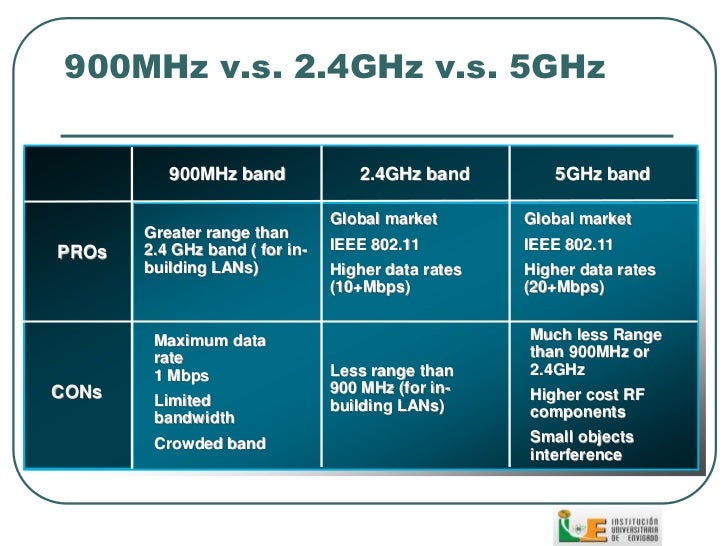| 900 MHz wireless and WiFi (2.4GHz) are different technologies but sometimes used interchangeably |
900 MHz wireless and Wi-Fi (2.4 GHz) are sometimes used interchangeably in the access control world to describe solutions that do not require running wires all the way to the opening. It’s true that, as wireless options, both technologies offer some general advantages over traditional hardwired solutions.In this article, Minu Youngkin, Allegion, Integrator Marketing Manager shares her thoughts and knowledge regarding both wireless and Wi-Fi technologies.
The Worldwide Approval Status for 900 MHz and 2.4 GHz Spread Spectrum Radio Products Kursat Erogiu Intermec Technologies Corporation. The approval process is the same for 2.4 GHz products as for 900 MHz products. Europe allowed bands and some of the restrictions. 2.4 GHz Operating at 900 MHz yields significantly longer range (approximately 2 times) than what is possible at 2.4 GHz. However, 900 MHz solutions are permissible in fewer countries. [Refer to the Government Agency Certification table for more information regarding certifications gained by Digi.] For example, Digi 900 MHz solutions. 900 MHz versus 2.4 GHz in long distance links. The attenuation over distance favors 900 MHz over 2.4 GHz. Pacific Wireless makes these antennas for both 900. In addition, the longer wavelength of 900 MHz radios versus 2.4 GHz (333 mm vs. Laird Technologies Wireless Connectivity Blog Pages. Industry News.
First of all, wireless overcomes architectural limitations. As any integrator knows, historical buildings, glass doors and atriums typically have openings that are difficult - and costly - to hardwire.
Wireless also eases budgets. Some openings, such as those with drywall or wood frames, are easy to wire. However, if there are numerous openings, labor costs can rise quickly.
“It generally takes five to six hours to run wire to an opening, compared to less than an hour with a wireless option,” says Brad Aikin, product leader, electronic commercial locks at Allegion. “If a client wants to reduce costs, wireless is a solid way to do it. Likewise, wireless allows integrators to expand the number of openings because the cost per door is less.”
Wireless is flexible. “With wireless, you can avoid coring doors or cutting around the door,” Aikin says. “Plus, relocating a lockset from one door to another is easier because it’s all in a self-contained solution.”
However, while they share some commonalities as wireless options, 900 MHz and 2.4GHz Wi-Fi are not identical solutions. So which is better? Actually, selecting one over the other is really a choice driven by the type of application and the goals of the client.

“There are advantages to both 900 MHz wireless and 2.4GHz Wi-Fi, as well as trade-offs,” Aikin says. “Determining which one is the best fit really depends on where and how it will be used.”
When 900 MHz is the best option
900 Mhz Vs 2 4 Ghz
900 MHz is the ideal solution when real-time is essential.
What Is 2.4ghz
| Wireless overcomes architectural limitations such as historical buildings, glass doors and atriums |
“900 MHz is definitely the way to go if your client wants the ability to communicate to the device in 10 seconds or less, such as applications providing remote lockdown or real-time management of changes to employee credential access,” Aikin says. “The Schlage AD-400, for example, has a patent-pending Wake-Up On Radio™ feature that allows real-time communication from the host to the device, and monitors all alarms and events in real time—all while preserving battery life.”
5ghz
Integrators also use 90 MHz when signal range may be problematic. A 900 MHz wireless connection typically has a larger range than a 2.4GHz Wi-Fi connection. While all RF radio waves can be subject to some interference, Aikin says, technology and architecture configurations exist to ensure reliability and performance. In addition, 900 MHz operates on a lower frequency range that allows it to penetrate through buildings easier and be more resistant to interference.
“It’s always important to look at existing frequencies in the environment to determine if they are compatible with the frequency you’re proposing, or if additional measures are required to minimize interference,” he says.
When 2.4GHz Wi-Fi may be considered an option
2.4ghz Vs 5ghz

Current solutions for 2.4GHz Wi-Fi—which is not online at all times—also offer some benefits. 2.4GHz Wi-Fi is a worthwhile consideration for your client when real-time access control is not required: A client who wants access control but doesn’t need real-time access is a candidate for 2.4GHz Wi-Fi.
“Current Wi-Fi locks communicate on a time delay, typically 12 to 24 hours,” Aikin says. “In these cases, the client can afford to have the device operate independently offline and wait for updates that are pushed down only once or twice a day.”
WiFi is often used in applications where access rights seldom change. If the client has low turnover or very infrequent changes in access privileges, then updating credential information with a time delay only once or twice a day may be adequate.
WiFi is also an option when the use of the existing IP infrastructure is preferred. If your client wants to use the same network architecture for locks as they do for managing other communication to printers, work stations and other devices, then 2.4 GHz Wi-Fi may be considered.
The final decision
The decision to use 900 MHz wireless or 2.4 GHz Wi-Fi is straightforward for some projects. Often, though, several factors need to be assessed so clients can prioritize goals and determine the trade-offs they are willing—or not willing—to accept.



